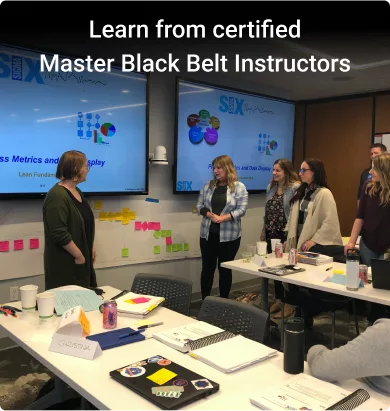
Systems Thinking Virtual Instructor-Led Training
The System Thinking Live Virtual Instructor-Led training is 2 Days (12 hours), delivered by one of our Master Black Belt instructors via Zoom.
ViewLean Six Sigma Training Certification
Why did we make these particular decisions? How did we end up in our current state? Why is it that we always seem to make less-than-optimal decisions about our future? These questions can be summarized by the key question in systems thinking, how did we (through our internal thinking, our processes, our practices, and our procedures) contribute to or create the circumstances (good or bad) we face now? In this introductory session, the basic tools and methods for exploring this question are introduced.
Systems thinking is a set of tools and methods that dig deeper into the interrelatedness of the many forces at play in a system, including the very ways that we think. Within our organizations, we are often focused on linear thinking while exploring the many process-oriented problems we face. We tend to look only for simple cause-and-effect relationships rather than the more complex relationships at play between the many factors impacting a process/system. During these two-day sessions, we will introduce the basic concepts of systems thinking, focusing on the area of “systems dynamics,” which allows us to pictorially show the relationships between the many influences within a system. We will also explore the seven thinking modes that are key to shifting into a systems thinking mode. As organizations begin to explore the dynamics within their own systems, conversations can become challenging. Some key conversational tools are introduced that can help teams weather the storm of difficult conversations that arise when exploring systems issues.
At the end of this course, the attendees will have the tools and thinking modes needed to explore organizational challenges that cannot be addressed by traditional problem-solving methods.
Sign up for our Systems Thinking Training Course Here

The System Thinking Live Virtual Instructor-Led training is 2 Days (12 hours), delivered by one of our Master Black Belt instructors via Zoom.
View Systems Thinking Webinar
[
]
Systems Thinking Webinar
[
]
| Duration | Dates | Location | Cost | Register |
|---|

Limited Time Discount
Save upto 20%
on ANY Lean Six Sigma Certification!
Turn workplace opportunities into impact.
Make the smart investment with our limited-time discounts on all Belt courses.
This will close in 0 seconds
"*" indicates required fields